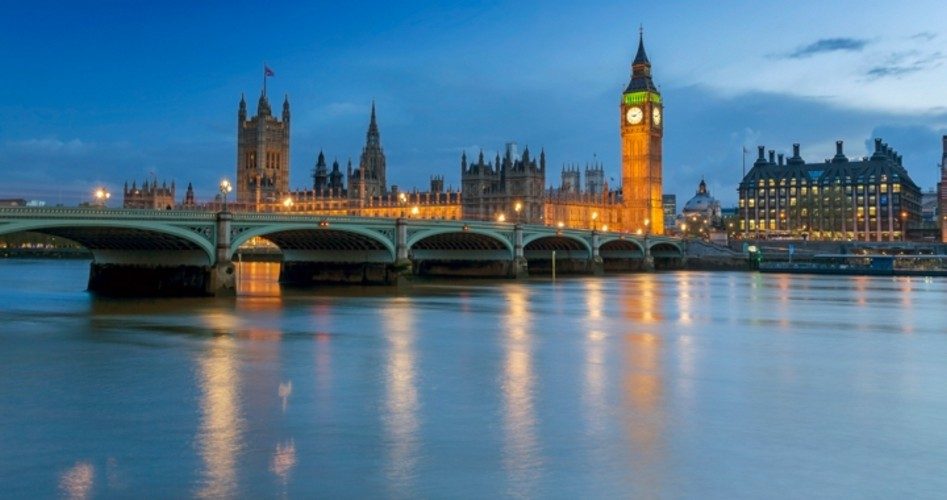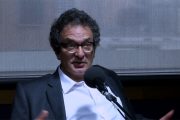
In an ironic twist, the previously incarcerated, on-probation London terrorist shot dead Friday launched his fatal knife attack at an event celebrating a rehabilitation program he’d been a part of — and he was there to discuss his thoughts on criminal-justice reform. Moreover, his two murdered victims were passionate believers in the program.
Usman Khan, 28, a terrorist released from prison early and considered a rehabilitation “success story,” was wearing a hoax suicide vest when he stabbed five people November 29 before being shot to death by police. As for the site of the carnage, the Telegraph reports:
The event at the centre of the London Bridge attack was an alumni celebration for an organisation run by academics from the University of Cambridge.
Learning Together was set up in 2014 by Ruth Armstrong and Amy Ludlow, from the Faculty of Law and Institute of Criminology.
It brings together people in criminal justice and higher education institutions.
The attacker, who was on probation and wearing a tag, is understood to have been invited to share his experiences as a former prisoner.
Academics and criminal justice campaigners had tweeted excitedly about the day ahead as they gathered at the Grade II listed Fishmongers Hall, just off London Bridge, to celebrate Learning Together’s fifth anniversary.
Khan’s deceased victims, Saskia Jones, 23, and Jack Merritt, 25, were described by the New York Times as “two bright, idealistic young people who believed passionately in prison rehabilitation” and “threw themselves into” the Learning Together program.
Stressing that education in prisons “should not be undermined by the London Bridge attack,” the Guardian pointed out Sunday that two other criminal event attendees tried to stop Khan. They are “James Ford, who is also thought to have tried to save the life of one of the victims” and “Marc Conway,” reports the paper.
Of course, no one is saying that intra-prison educational opportunities shouldn’t be provided. But education doesn’t equal exoneration and thus doesn’t require dispensation from punishment. Note here that if none of these men had been released, there’d be five fewer crime victims right now — and two more innocents still alive.
Also note that Ford was in prison for murdering a mentally handicapped 21-year-old woman named Amanda Champion, who “was found strangled and with her throat cut on waste ground” in 2003, wrote the Guardian Saturday. Her family hadn’t been told about Ford’s day release and stressed that he’s “not a hero.”
While no one is beyond redemption, zeroes greatly outnumber heroes among convicted criminals. Consider Khan: He “was one of a group of nine men who were the focus of MI5’s anti-terror Operation Guava,” Wikipedia informs. All “pleaded guilty on 1 February 2012 to Al-Qaeda-inspired terrorism offences, which included plans to bomb the London Stock Exchange, the Houses of Parliament, the U.S. embassy, several religious and political figures, building a terrorist training camp in land Khan’s family owns in Pakistan occupied Kashmir, attending terrorism related operational meetings, [and] preparing to travel abroad and assisting others in travelling abroad for terrorist activities.”
Given this, why was Khan on probation and released with only an ankle bracelet to monitor him? Was there any indication he’d dispensed with the Islamic theology that birthed his jihadist passions? When pondering this, note that a very interesting German study involving 45,000 young people found that while increasing religiosity made Christian youth less violent, it made Muslim youth more violent.
Really, though, this story brings to mind Georg Hegel’s observation, “We learn from history that we do not learn from history.” Favoring “rehabilitation” over incarceration is nothing new and is one reason (not the only one) crime in the United States skyrocketed in the 1960s, ’70s, and ’80s. And our move toward locking more miscreants up is one reason (again, not the only one) crime dropped in the ’90s and beyond. But a generation-plus is more than enough time to unlearn a lesson.
In fact, “Campaigns against ‘mass incarceration,’ a Soros agenda hobbyhorse, fail wherever they are tried,” wrote American Thinker (AT) Saturday. “[AT editor] Thomas Lifson has an item today about how ‘affordable bail’ and letting rabid criminals circulate freely in the law-abiding population has created a hellish situation in Chicago. But the influence of this dreck is all over, including woke London,” the site continues.
And so is something else the Khan case reflects: immigrationist, multiculturalist, upside-down, bad-is-good coddling of jihadists. Just consider some headlines from Jihad Watch, all dated December 2:
London’s Mayor Khan on London Bridge jihad massacre: “one of our strengths is our diversity.”
The mayor means it, too. Note that while authorities blame London’s rising crime rate partially on strained resources, British apprehensions for online “hate speech” were up almost 900 percent in some areas since 2014, with police arresting nine people daily in the U.K. and, in 2016, 867 in London alone, RT reported in 2017.
But don’t be surprised when a hateful Khan is released while another Khan pushes a hate con. It just reflects how people get the government they deserve. As to this, a new study shows that Europeans are more concerned about climate change than jihadist terrorism.
Image: _ultraforma_ via iStock / Getty Images Plus
Selwyn Duke (@SelwynDuke) has written for The New American for more than a decade. He has also written for The Hill, Observer, The American Conservative, WorldNetDaily, American Thinker, and many other print and online publications. In addition, he has contributed to college textbooks published by Gale-Cengage Learning, has appeared on television, and is a frequent guest on radio.



